palace of varieties
palace of varieties
Yeovil's first purpose-built cinema
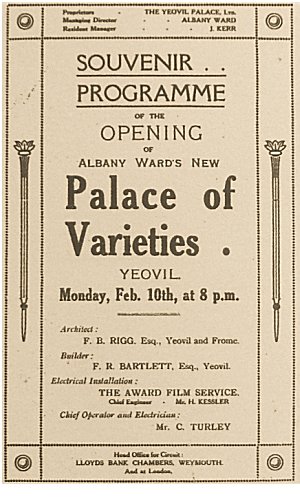 The first public
showing of a
film in Yeovil
was at the
Assembly Rooms
in
Princes Street
in 1896 but the
Central Auction
Rooms in Church
Street followed
in 1912, renamed
the
Central Hall
Cinema in
1916. However on
Monday 10
February 1913,
at 8pm the
Palace of
Varieties,
Yeovil's first
purpose-built
cinema, opened.
The first public
showing of a
film in Yeovil
was at the
Assembly Rooms
in
Princes Street
in 1896 but the
Central Auction
Rooms in Church
Street followed
in 1912, renamed
the
Central Hall
Cinema in
1916. However on
Monday 10
February 1913,
at 8pm the
Palace of
Varieties,
Yeovil's first
purpose-built
cinema, opened.
It was built on the site of what was essentially slum housing known as Pashen's or Patience Court.
The Western Gazette reported on 14 February 1913 "On Monday evening, the new picture theatre, which has been erected in The Triangle for the Yeovil Picture Palace Ltd, was opened, and the smart little house was crowded with an audience that included a large number of the leading residents, members of the governing body, and Borough officials.
Yeovil's new cinema was the brainchild of early cinema entrepreneur Albany Ward.
Hannam Edward Albany Ward (1879-1966), known as Albany Ward, was a pioneer English theatre proprietor and cinema developer, who ran one of the largest cinema circuits in Britain in the early part of the twentieth century. He was born Hannam Edward Bonnor in Stoke Newington, London, and started work in 1896 as an assistant to pioneer filmmaker Birt Acres. In 1898 he formed his own company and toured Wales and the south-west of England, becoming the first moving picture exhibitor in parts of the country. He opened his first theatre, the Empire Theatre in Oxford, in 1900, showing a mixture of films and variety acts. By 1901 he was referring to himself simply as Albany Ward, with no forenames, and described himself as "Theatrical manager". He established his first permanent theatre, in Weymouth, Dorset, in 1906 and Weymouth became his residence and main base form where he built up one of the largest circuits of cinemas in the country, owning 29 cinemas by 1914.
The Palace of Varieties was designed by FB Brigg, architect of Yeovil and Frome, and built by Yeovil builder FR "Frankie" Bartlett. The name Palace of Varieties was not new to Yeovil and had been the name of the Assembly Rooms in Princes Street around 1905.
Albany Ward went out of business in 1919 and his cinema and theatre chain was sold to Provincial Cinematograph Theatres Ltd, at which time it was renamed the Yeovil Palace Theatre. In February 1929, the Provincial Cinematograph Theatres Ltd was taken over by Gaumont. The Palace Theatre was closed and the building demolished in 1934 to be replaced by the new Gaumont Palace in 1935.
gallery
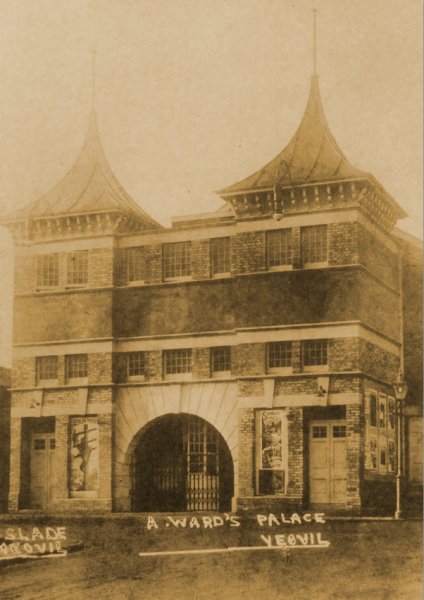
This photograph
features in my
book "A-Z
of Yeovil"
The Palace of Varieties, photographed in 1913.

One of the earliest press advertisements for the Palace of Varieties, from the 4 April 1913 edition of the Western Chronicle.
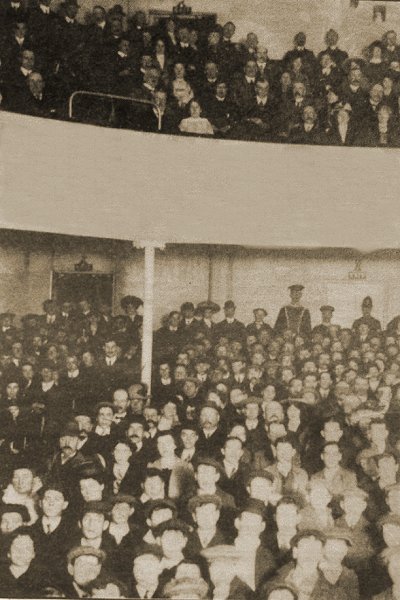
The Palace Theatre audience of 1914. Note that most of the audience are men and the ladies appear to be seated primarily in the upstairs gallery.
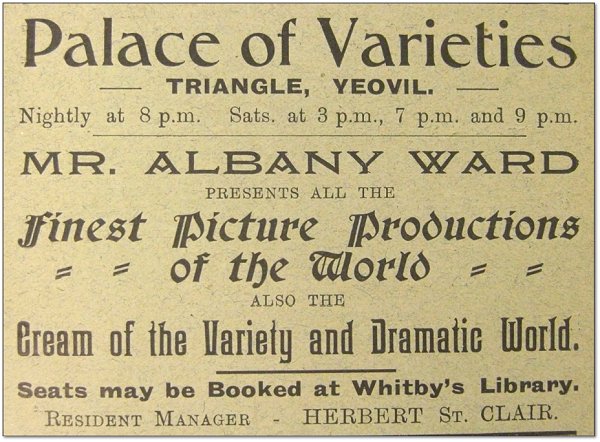
Advertisement for Albany Ward's 'Palace of Varieties' from Whitby's Yeovil Almanack Advertiser of 1916.
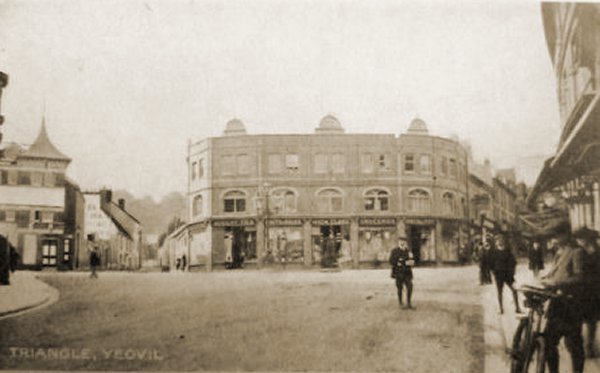
A postcard of the Triangle about 1920, before the construction of the underground toilets.
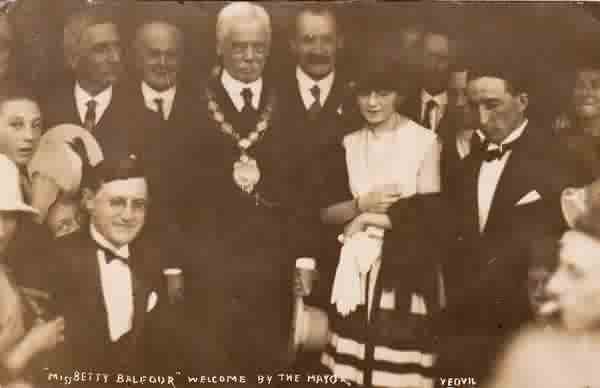
On Tuesday
evening 11
August 1926
Betty Balfour
(1903-1977), a
big star of the
British silent
cinema, appeared
both on the
screen in
Sqibbs wins the
Calcutta Cup
and in person on
the stage of the
Yeovil Palace
Theatre. The
entrance to the
theatre off the
Triangle, was
packed with fans
anxious to catch
a glimpse of the
diminutive star
as she was
welcomed by the
Mayor, Alderman
Jabez Matthews,
wearing his
chain of office,
and accompanied
by fellow
aldermen and
councillors
whilst the Town
Band played
‘Rule
Britannia’.
During the
interval in the
show, Betty
Balfour a spoke
to the audience,
expressing her
delight at being
with them and
sharing the
excitement of
the film.
Following the
entertainment,
the mayor and
town
councillors,
were her guests
at a ‘social
evening’ in the
Mermaid Hotel.
The Western
Gazette reported
that Betty
Balfour was
working on
location for a
film called
Somebody’s
Darling at
Martock, Compton
Pauncefoot and
Minehead, which
the producers
stated provided
rural settings
which were
‘something the
Americans could
not get’.
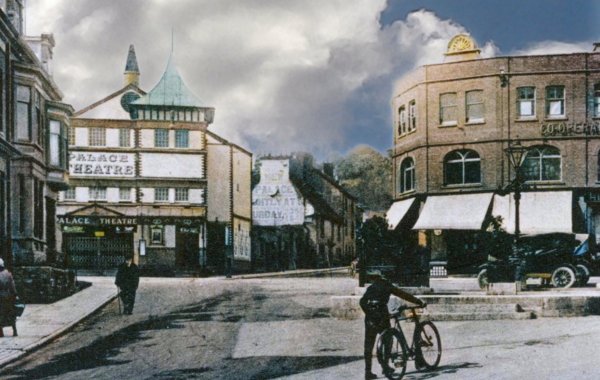
From my
collection
- This
colourised
postcard
features in my
book 'Yeovil
From Old
Photographs'
A detail from a 1927 postcard showing the Palace Theatre.
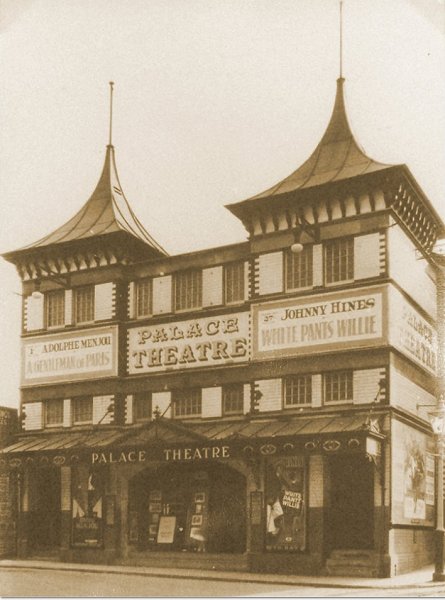
The Palace Theatre, photographed in 1927.
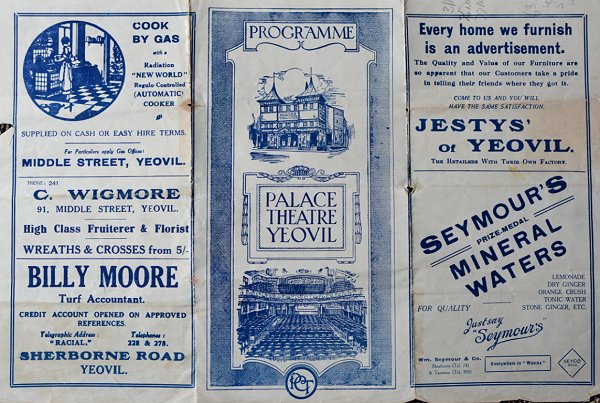
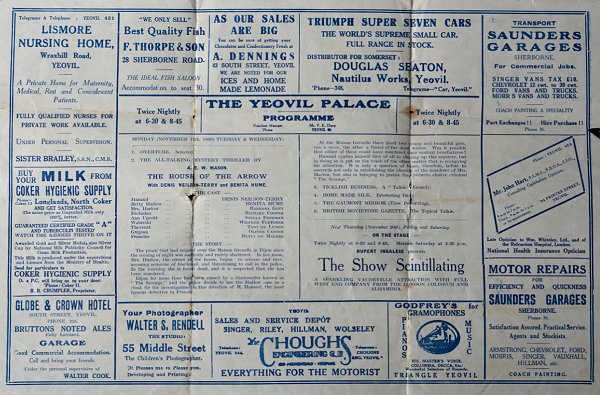
Courtesy of Bill and Audrey Robertson
Both sides of a Palace Theatre programme of 1930.
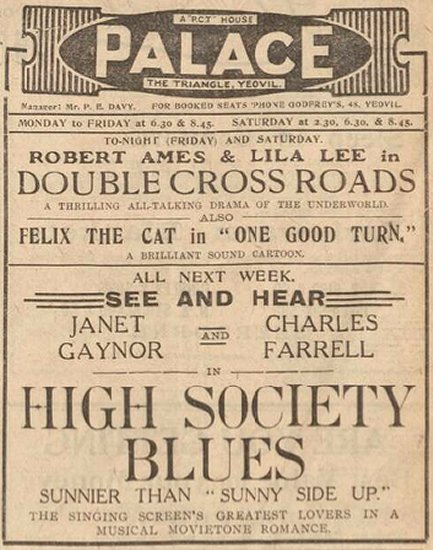
An advertisement placed in the 10 October 1930 edition of the Western Gazette.
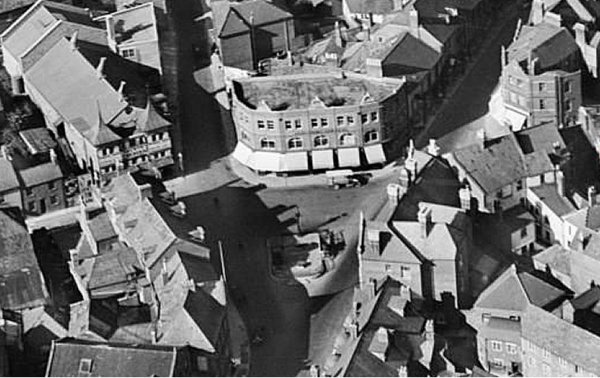
An aerial view of the Triangle dating to 1928 with the Co-operative Society's building and underground toilets in the centre - possibly under construction at this time? Note the old Palace Theatre at top left, on the corner of South Street and Stars Lane.
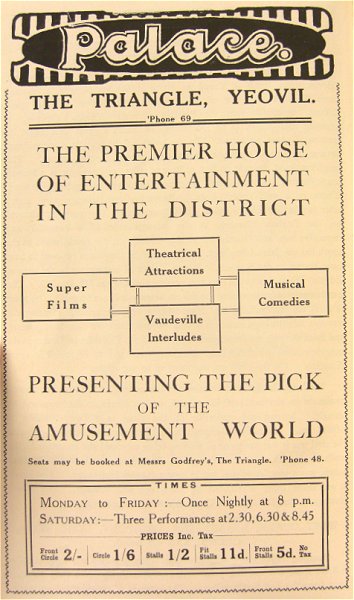
From my
collection
A 1920's advertisement for the Palace Theatre from the Warbis Magazine, by this time simply known as the Palace. The prices of admission are interesting - from 2/- in the Frost Circle to 5d (with no tax!) in the front stalls.
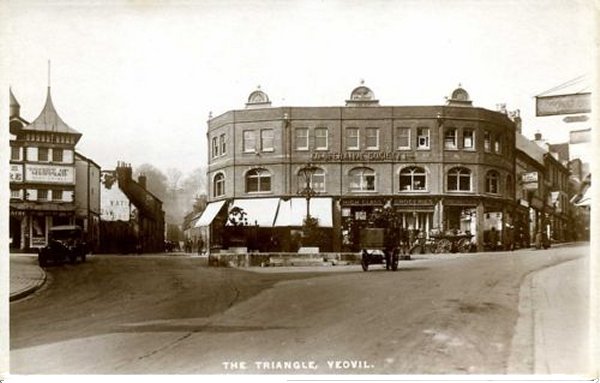
From my
collection
A postcard of about 1930 with the completed toilets in front of the Co-op building with the Palace Theatre seen at extreme left.